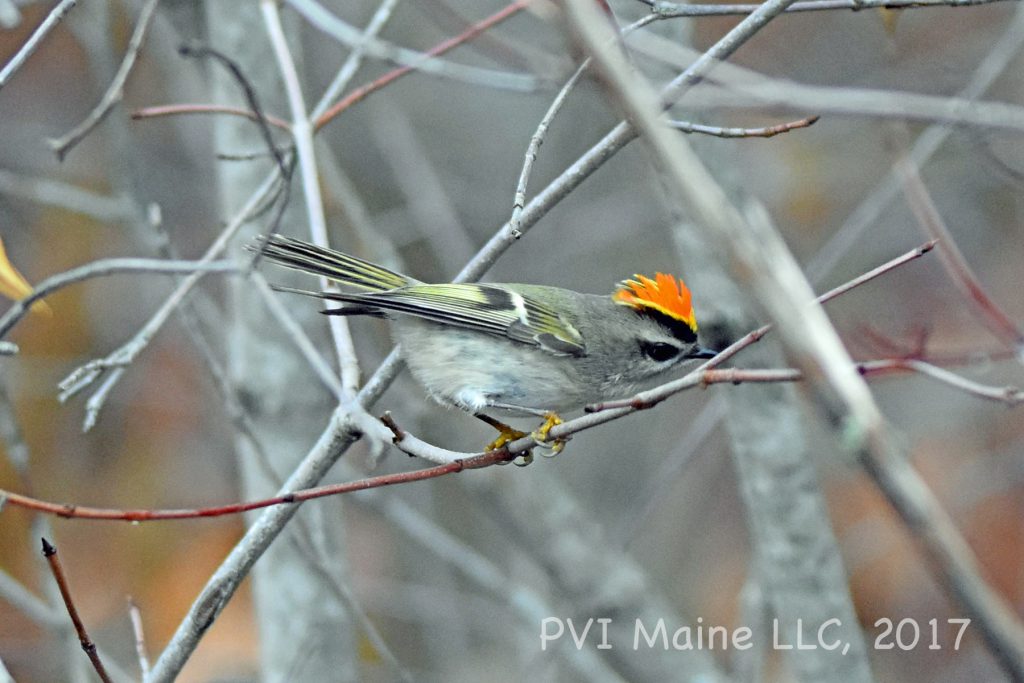
The Golden-crowned Kinglet (Regulus satrapa) is a small passerine bird that belongs to the family Regulidae. This bird measures approximately 3.5 inches (9 centimeters) in length and weighs around 0.2 ounces (6 grams), making it one of the smallest birds in North America. Despite its diminutive size, this bird is easily recognizable due to its bright yellow-orange crest on its head, which contrasts sharply with its black and white striped face.

Apart from its distinctive crest, the Golden-crowned Kinglet also has a bright white wing bar that can be seen in flight. Its back and wings are olive-green, while its underparts are white. Males and females are very similar in appearance, although males have a more prominent and larger crest than females. Juveniles have a browner coloration and a less pronounced crest.
Golden-crowned Kinglets breed in the boreal forests of North America and during the winter months, they migrate southward to the United States, Mexico, and Central America. They are highly active birds, constantly flitting from tree to tree in search of insects and spiders, their primary food source. Their small size allows them to hover and cling to branches, making them adept at foraging in dense foliage.
Golden-crowned Kinglets are often found in mixed-species flocks with other small songbirds such as chickadees and nuthatches. They have a high-pitched, thin song that sounds like “see-see-see” and a call that resembles a high-pitched “tseet”.

Overall, the Golden-crowned Kinglet is a small but distinct bird with a striking crest and a remarkable ability to forage in dense foliage. Despite its small size, this bird is an important member of the boreal forest ecosystem and a delight for birdwatchers lucky enough to spot one.

